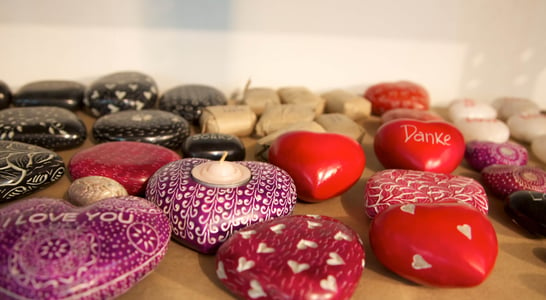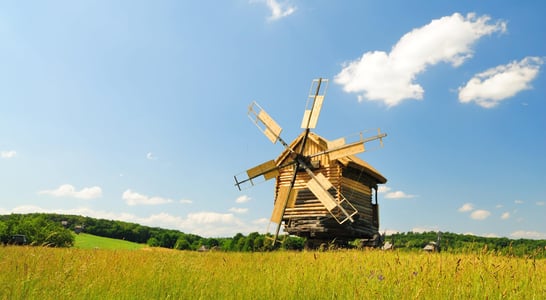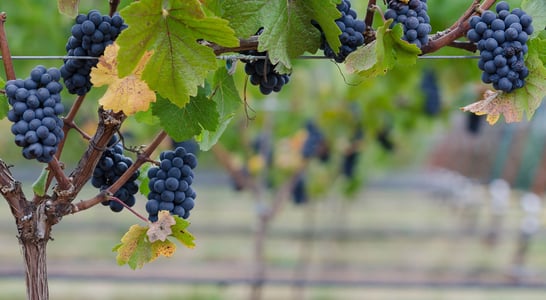
National Moscato Day
Host or attend a wine-tasting party, mix some Moscato cocktails, take a trip to wine country or just read up about the Muscat grape-based wine known as Moscato.
Wines have always been a popular drink since their origination thousands of years ago. One special drink in the wine family is Moscato, made with a kind of grape that has been used since the Renaissance times of Italy.
National Moscato Day aims to celebrate the history and taste of this delicate wine.
How to Celebrate National Moscato Day
Looking for the best way to celebrate National Moscato Day? The good news is that the options are almost endless, as long as the activity involves enjoying a glass (or a bottle) of Moscato.
Get started with some of these ideas or come up with some of your own:
Host a Wine-Tasting Party
Gather a group of friends, neighbors, family or coworkers to celebrate the day with a wine tasting event. Serve all different kinds of Moscato from a variety of vineyards.
Include some complimentary food with the Moscato, including appetizers such as fancy cheeses and spicy paellas.
Learn About Moscato Wine
Those who have a favorite vineyard or wine company might want to take this opportunity to research that company’s history and learn how they fermented their delicious grapes into Moscato.
This fruity and floral wine is perfectly light and refreshing for drinking on a summer day. Here are some other interesting facts about Moscato wine:
-
Moscato has a fairly low alcohol content (usually between 5% and 7% alcohol by volume) so it’s great for a hot summer day or to serve at a large party.
-
The grape used to make Moscato wines goes by quite a few different names, including Muscat Blanc, Muskateller, Muscat d’Alsace, and Moscatel.
-
Muscat grapes are actually one of the oldest known grapes that continue to be produced today. With a strong base in Piedmont, Italy, the grape is now grown in vineyards all around the world.
Take a Trip to Wine Country
Whether living in North America, Europe, South America or even Africa, this would be a great time to take a trip to a local vineyard or winemaker to visit and see what kind of Moscato wines they have in production.
Whether choosing Italy, Napa Valley, Argentina or some other corner of the world, a winery tour would be a perfect way to celebrate National Moscato Day.
Make Some Moscato Cocktails
While some wines don’t really lend themselves to being mixed into drinks, Moscato’s light and fruity flavors means that it works super well when made into refreshing coolers. Try out some of these ideas for making delicious beverages that can be enjoyed on National Moscato Day and all summer long:
- Blackberry Moscato Slushies. This delicious frozen treat is made with chilled moscato, frozen blackberries (or another preferred fruit) and ice, all mixed together in a blender.
- Moscato Sangria. Channel that inner Spanish vibe by making a delicious pitcher of fruity Sangria using Moscato. Mix with blood oranges, strawberries, raspberries, blueberries, San Pellegrino sparkling water and a fruity liquor, like Chambord.
- Moscato Mule Cocktail. This is a fun take on the Moscow Mule, using Moscato, vodka, ginger beer, lime juice and ice. Garnish with a lime and serve in a delightful copper mug.
- Winter Moscato Punch. Moscato drinks don’t just have to be for the summer! This punch is a great one to serve at a holiday party or family gathering. Mix Moscato with cranberry and pomegranate juices, ginger beer, and triple sec. Then garnish with fresh cranberries, orange slices and sprigs of fresh rosemary.
No matter what activities are included in the enjoyment of this day, don’t forget to share a love of Moscato with wine-loving friends and family to celebrate the delicious wine that is Moscato!
History of National Moscato Day
National Moscato Day was founded in 2012 when it was started by Gallo Family Vineyards, a passionate wine-growing company.
But, certainly, the viticulture of wine has been known to be around as long as the grapevine, which is native to the area south of the Black Sea near the disputed territories of Georgia and Armenia.
Wine-making is most believed to have originated in Mesopotamia as early as 3000 BC and helped influence Egypt before dynastic times. Wine production in Italy is believed to have originated from the influence of the Etruscans civilization who lived in what is known today as Tuscany. It is also likely to have been influenced by the Mesopotamian civilizations before the Greeks brought winemaking to Sicily.
The Romans improved the winemaking process, and thus became famous for their abilities. Even as wine grew and fell in popularity, it continued to be produced by Christian monks during the Renaissance.
But it wasn’t until the 19th and 20th centuries that wine production became regulated so that people could finally have realistic expectations about what a bottle of wine might actually be like.
Italian wines have always had a reputation for their variety. Today, Italian wine is considered highly prized for its process and flavor. Those made from the Moscato grape have a uniqueness that can be identified by wine lovers everywhere.
Moscato is made from the Moscato Blanco (or Muscat Canelli) grape, one of the oldest grapes in Italy. Moscato is popular for its variety of flavors, such as light and dry, sweet and sparkling or rich dessert wine. Their sparkling, rich and yet so light flavor is popular as a party drink.
As the third most popular wine in the United States, Moscato has become a popular version of wine to be served at large gatherings, as it is often well-liked by many different people.
It has variations such as white, red, and rose to compliment all kinds of delicious foods. So, grab a glass and drink away for National Moscato Day!
National Moscato Day FAQs
What role did Moscato play in ancient Mediterranean culture?
Moscato’s ancestor, the Muscat grape, was cherished in ancient Greece and Rome. It was often used in sweet wines served at feasts and religious ceremonies.
The grape’s ability to thrive in warm climates made it a favorite for early winemakers. Its popularity spread along trade routes, influencing wine traditions across the Mediterranean.
Why is Moscato called a “gateway wine”?
Moscato’s sweetness and low alcohol make it a favorite for new wine drinkers.
Its fruity flavors, like peach and orange blossom, appeal to those unfamiliar with drier wines. Many people start their wine journey with Moscato before exploring other varieties.
What’s a quirky way Moscato is used in desserts?
Moscato is a common ingredient in Italian desserts like zabaglione. This light custard combines eggs, sugar, and Moscato for a creamy, wine-infused treat.
It’s also used to poach fruits, such as pears, creating elegant, flavorful dishes.
How do wine regions adapt Muscat grapes for different Moscatos?
Different climates and winemaking techniques lead to unique Moscato styles.
In Italy, Moscato d’Asti is lightly sparkling and sweet, while in France, Muscat de Beaumes-de-Venise is fortified for richness. Even Australia produces bold, citrus-forward Moscatos with a sunny, tropical twist.
Are there any Moscato superstitions or myths?
Some believe Moscato’s sweet aroma brings good luck when served at weddings. In ancient times, people thought its golden hue symbolized prosperity. Even today, some toasts with Moscato for a “sweet” start to the year.
How has Moscato influenced cocktail culture?
Bartenders often use Moscato as a mixer for light, refreshing drinks. Moscato Sangria, combining the wine with fresh fruit and a splash of soda, is a crowd favorite.
It’s also featured in sparkling wine cocktails, blending well with liqueurs like elderflower.
What makes Moscato unique compared to other sweet wines?
Unlike dessert wines like Port or Sauternes, Moscato is often lightly sparkling or still.
Its natural sweetness comes from stopping fermentation early, leaving unfermented sugar in the wine. This process preserves its fruity, floral profile.
What unusual foods pair surprisingly well with Moscato?
Aside from desserts, Moscato pairs beautifully with salty and savory foods. Blue cheese, prosciutto, and spicy tacos balance its sweetness. Even buttery popcorn becomes gourmet with a chilled glass of Moscato.
Is Moscato celebrated differently in various countries?
In Italy, Moscato Day often involves tastings of regional varieties like Moscato d’Asti. In Australia, Moscato picnics pair the wine with tropical dishes. The U.S. often focuses on Moscato cocktails and pairing events.
How did Moscato become a global sensation?
Moscato’s affordability and versatility played a huge role in its rise. In the 2000s, mentions in music and social media helped it gain fame, especially among younger drinkers.
Its reputation as a fun, approachable wine made it a staple at casual gatherings worldwide.
Also on ...
View all holidaysWorld Fair Trade Day
Make conscientious shopping choices and research which companies use child labor, unsafe practices, and more to cut corners, so you can avoid them.
National Train Day
Go out and take a ride on a train, or watch them go by from a comfortable vantage point, whether fast, sleek commuter trains or large, loud steam engine transporters.
National Windmill Day
Drive out to windmill country, or read up about the history of windmills and how they can provide clean, sustainable energy by harnessing Earth’s natural power.
Archery Day
Channel your inner Robin Hood with a sport that's equal parts precision and athleticism, and requires quick reflexes and a sharp eye.
We think you may also like...
National Pinot Noir Day
Gather friends and family for a wine-tasting affair, perhaps with a selection from different regions like Bergundy, France and the Willamette Valley, Oregon.
National Red Wine Day
Rich, velvety flavor and bold notes — this drink is the perfect complement to any occasion, from an elegant dinner to a cozy night in.
Global Champagne Day
Bubbly, often used for celebrations, with a touch of elegance and effervescence, it's the classic way to toast to good times.








